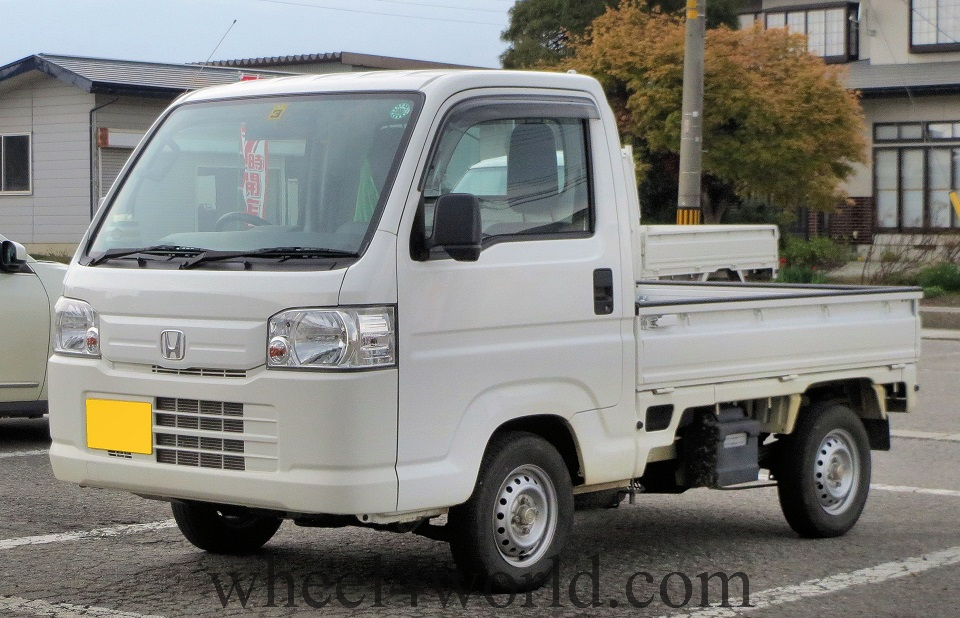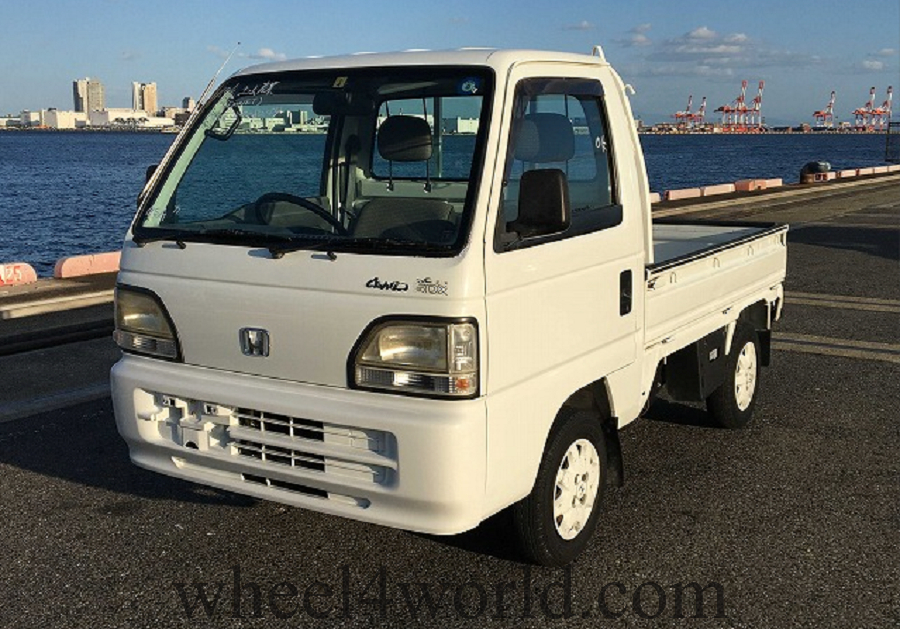Introduction
The Honda Acty represents a hallmark of engineering efficiency within the kei truck and van category. Designed to meet the evolving demands of urban logistics and agricultural applications, the Acty has consistently delivered robust functionality, economic viability, and mechanical reliability. Since its inception in 1977, this model has undergone significant technological and design advancements. This paper explores its historical development, technical specifications, competitive positioning, real-world applications, and future prospects.

Historical Development
Honda introduced the Acty in response to Japan’s stringent kei vehicle regulations, which necessitate compact yet functional vehicles for both commercial and private use. The term “Acty” is derived from “activity,” reinforcing its multifunctional nature. Over four generations, Honda refined the Acty’s mechanical structure, drivetrain, and overall efficiency to align with contemporary market demands and regulatory standards.
Generational Progression
1. First Generation (1977-1988)
- Utilized a 545cc 2-cylinder engine, adhering to kei car regulations of the time.
- Rear-mounted engine with a rear-wheel-drive configuration.
- Available in both truck and van variants.
- Targeted at the agricultural sector, small-scale construction, and urban logistics.
- Characterized by a minimalist yet highly functional design.
- Offered basic interior features with limited creature comforts.
2. Second Generation (1988-1999)
- Introduced a more powerful 656cc 3-cylinder engine.
- Enhanced fuel economy and thermal efficiency.
- Adopted a mid-engine, rear-wheel-drive layout to improve weight distribution.
- Optional four-wheel drive (4WD) for enhanced off-road capability.
- Upgraded suspension system for better handling and load-bearing capacity.
- Improved cabin ergonomics, incorporating slightly more refined materials.
3. Third Generation (1999-2009)
- Implemented the E07Z 660cc engine, refining power delivery and efficiency.
- Modernized exterior and interior design, prioritizing driver ergonomics.
- Introduced automatic transmission variants, broadening market appeal.
- Integrated advanced safety features, such as reinforced structural integrity and enhanced restraint systems.
- Expanded cargo bed configurations to cater to a broader range of commercial applications.
4. Fourth Generation (2009-2021)
- Focused on fuel efficiency advancements to meet stringent emission standards.
- Further improved driver and passenger comfort with interior upgrades.
- Enhanced noise insulation and vibration control for a smoother ride.
- Officially discontinued in 2021 due to changing market dynamics and regulatory constraints.
Technical Features and Performance
The Honda Acty incorporates a suite of features engineered for efficiency, reliability, and adaptability.
1. Compact Structural Engineering
Designed for dense urban environments, the Acty’s compact dimensions facilitate seamless navigation through constrained spaces. The lightweight chassis further contributes to its fuel efficiency and maneuverability.
2. Engine Efficiency and Performance
Equipped with a 660cc 3-cylinder SOHC engine, the Acty achieves remarkable fuel economy, averaging 40-50 miles per gallon (MPG), aligning with kei vehicle regulatory limits.
3. Utility-Oriented Cargo Design
- The truck variant features a fold-down cargo bed, optimizing loading and unloading processes.
- The van model provides a secure, enclosed cargo area, catering to logistics and delivery-based businesses.
- Additional customization options allow for specific industry adaptations, such as food service, mobile workshops, and emergency response applications.
4. Drivetrain Versatility: 4WD Capability
Many Acty configurations include an optional 4WD system, expanding its operational scope to rural terrains, inclement weather conditions, and agricultural fields.
5. Minimalistic Maintenance and Ownership Costs
A fundamental advantage of the Acty lies in its straightforward mechanical architecture, facilitating low-cost repairs and broad aftermarket support. With a high availability of replacement parts, maintenance remains affordable and accessible.
6. Ergonomic and Functional Interior
Despite its kei-class constraints, the Acty prioritizes driver comfort with features such as air conditioning, power-assisted steering, and contoured seating in later models. Intuitive dashboard layouts enhance accessibility to controls, optimizing driver efficiency.
7. Safety Enhancements
- Reinforced crumple zones to absorb impact energy.
- Inclusion of driver and passenger airbags in newer models.
- Enhanced braking system with anti-lock braking (ABS) options.
- Structural reinforcements for better rollover protection.
Market Viability and Comparative Analysis
1. Economic Accessibility
The Acty remains a cost-effective choice, offering high utility-to-cost ratios whether purchased new or through the used vehicle import market.
2. Sustainability and Efficiency
As fuel prices continue to fluctuate, the Acty’s low fuel consumption ensures long-term operational savings, making it an ideal choice for budget-conscious enterprises.
3. Application Diversity
The Acty’s adaptability extends across agriculture, urban delivery, small business logistics, and mobile vending applications.
4. Durability and Engine Longevity
Honda’s reputation for durable powertrains is evident in the Acty, with many units surpassing 200,000 kilometers with routine maintenance.
5. Urban Mobility Advantages
Compact dimensions enable the Acty to excel in densely populated areas where parking and maneuverability constraints hinder larger commercial vehicles.

Comparative Overview with Competing Models
To contextualize the Acty’s market standing, a comparison with competing kei trucks is essential:
| Feature | Honda Acty | Suzuki Carry | Daihatsu Hijet | Subaru Sambar |
|---|---|---|---|---|
| Engine | 660cc 3-cylinder | 660cc 3-cylinder | 660cc 3-cylinder | 660cc 3-cylinder |
| Fuel Efficiency (MPG) | 40-50 | 35-45 | 38-48 | 40-50 |
| 4WD Option | Yes | Yes | Yes | Yes |
| Maintenance Cost | Low | Moderate | Low | Moderate |
| Cabin Comfort | Moderate | Basic | Moderate | High |
| Safety Features | Moderate | Basic | Moderate | High |
Regulatory Considerations: US Market Feasibility
The Honda Acty qualifies for importation into the United States under the 25-year import exemption rule. This legislation permits the legal registration of Acty models aged 25 years or older. However, prospective buyers should verify state-specific regulations, as certain jurisdictions impose restrictions on kei trucks for on-road use. The rising interest in classic Japanese vehicles has also led to a growing demand for Acty models among enthusiasts and collectors.
Future Prospects
With the discontinuation of the Acty in 2021, Honda’s focus has shifted toward electric and hybrid utility vehicles. However, the legacy of the Acty remains intact, with increasing modifications, aftermarket support, and restoration projects. The demand for affordable, fuel-efficient, and compact utility vehicles suggests a continued niche market for used and refurbished Acty models.
Conclusion
The Honda Acty exemplifies efficiency, adaptability, and cost-effectiveness within the kei truck and van segment. Its blend of fuel efficiency, mechanical reliability, and compact design makes it an invaluable asset for business owners, agricultural workers, and urban service providers.
For individuals or enterprises seeking an economical yet highly functional work vehicle, the Honda Acty presents an ideal solution, offering exceptional performance and longevity at a competitive price point.


